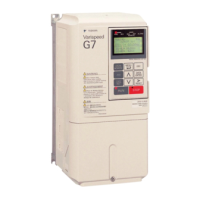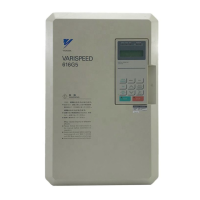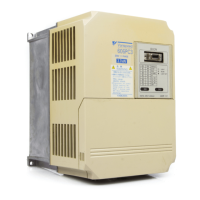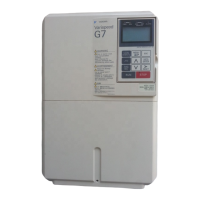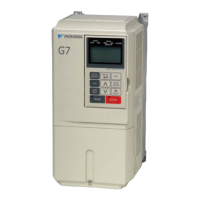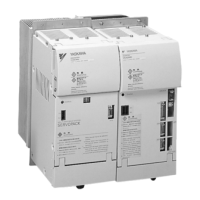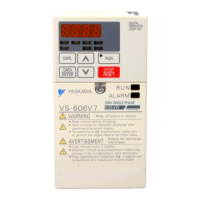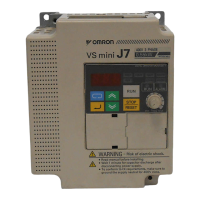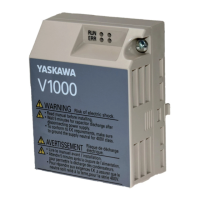Varispeed F7 Control Methods
10-3
10
* 1. The variable speed control range. (For continuous operation, the motor's temperature rise must be considered.)
* 2. The speed deviation in relation to the maximum speed with a rated load and when the load is stable. (For open-loop vector control, the motor temperature must be
25 °C ± 10 °C.)
* 3. The speed response guidelines indicating the extent of the motor's actual speed gain in proportion to the speed reference, which changes in a sinusoidal wave
form, within a range where motor torque does not become saturated.
* 4. A guideline for the motor torque that can be generated when started at a low speed and its output frequency (rotations) at that time.
* 5. This function limits the maximum motor torque to protect the machine and the load.
* 6. This function directly controls the amount of torque being generated at the motor and its rotation direction, e.g., to control force.
* 7. This function controls the amount of motor slip that occurs to prevent mechanical shock, when replacing a torque motor, etc.
* 8. This function performs simple positioning control (servo lock), without using an external positioning control device.
* 9. This function instantaneously estimates (or detects) the speed and rotation direction of a coasting motor, and quickly starts it without subjecting it to shock.
* 10.This function automatically adjusts the voltage applied to the motor to optimize the motor's efficiency with light loads.
* 11.This function improves the deceleration time without using a braking resistor by making the motor winding absorb regenerative power. As a standard, this func-
tion is effective with a motor running on 160 kW or less with a high-inertia load.
* 12.This function enables proportional gain in relation to changes in the speed reference, even for low rigidity (corresponds to the servo's model gain control).
Appli-
cation
Func-
tions
Autotuning
Line-to-line resis-
tance (Normally not
required.)
Line-to-line resis-
tance (Normally not
required.)
Rotational autotun-
ing, stationary auto-
tuning 1, 2, stationary
autotuning for line-
to-line resistance only
Rotational autotun-
ing, stationary auto-
tuning 1, 2,
stationary autotuning
for line-to-line resis-
tance only
Torque Limiting
*5
No No
Yes (except during
acceleration/decelera-
tion, below mini-
mum frequency, or
during reverse rota-
tion)
Yes
Torque Control
*6
No No No Ye s
Droop Control
*7
No No No
Yes (except for
0 min
−1
and during
reverse rotation)
Zero-servo Control
*8
No No No Ye s
Speed Estimation
(Detection) Instanta-
neous Speed Search
*9
Yes (speed and rota-
tion direction estima-
tion)
Yes (speed detection
and rotation direction
estimation)
Yes (speed and rota-
tion direction estima-
tion)
Yes (speed and rota-
tion direction detec-
tion)
Automatic Energy-
saving Control
*10
Yes Yes Ye s Yes
High-slip Braking
*11
Yes Yes No No
Feed Forward Con-
trol
*12
No No No Ye s
Table 10.1 Overview and Features of Control Methods (Continued)
Control Method V/f Control V/f Control with PG
Open-loop Vector
Control
Flux Vector Control

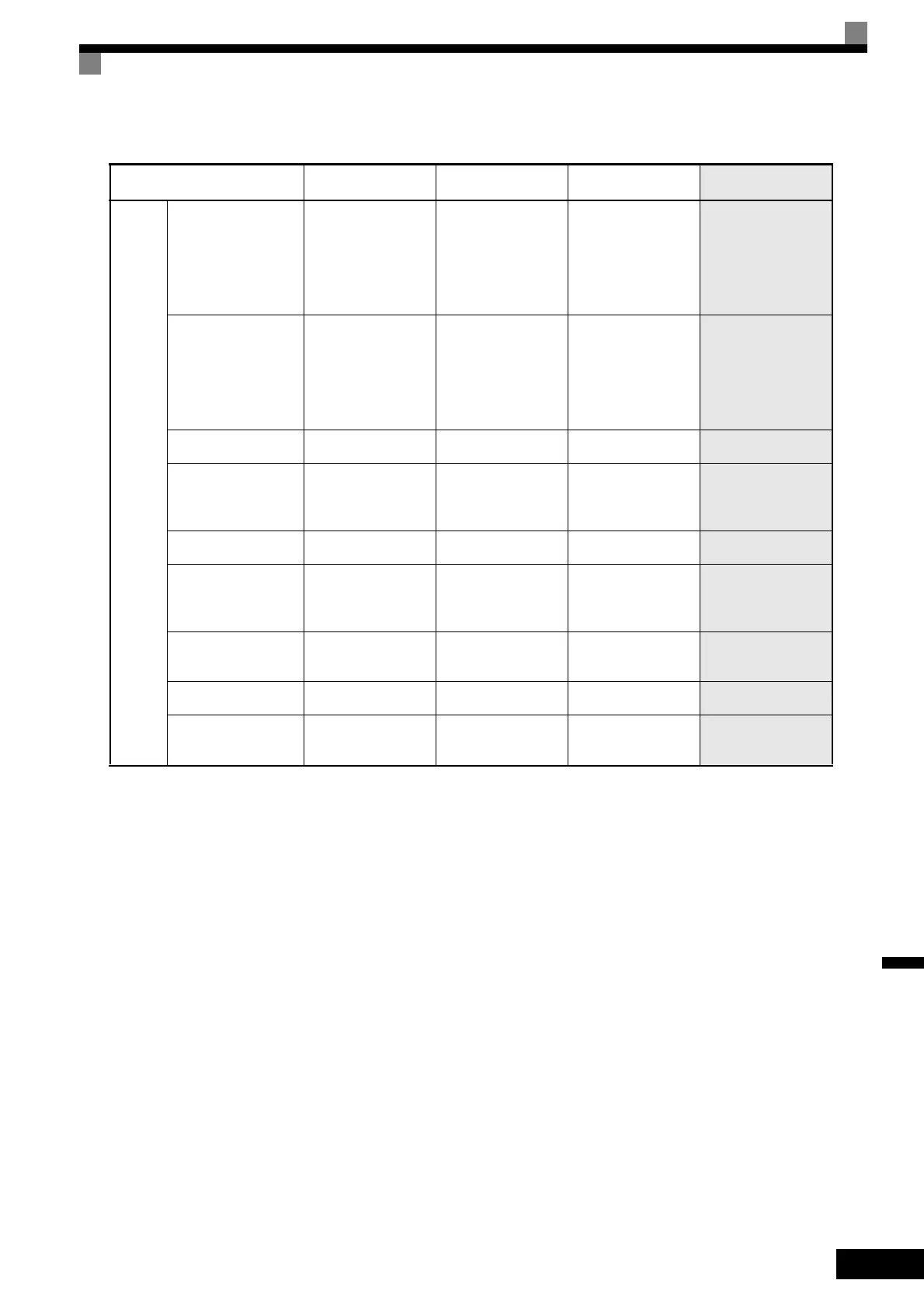